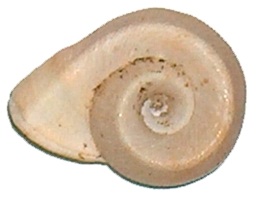Nutrition
 There is little information on what exactly Planorbella
campanulata consumes, but it can be inferred that based on
the family Planorbidae that this species consumes large amount
of vegetation (Baker 1945). This family can be found in the
wild eating floating leaves to sunken leaves and algae (Baker
1945). It
has been found that Planorbella when in an aquarium
will eat anything from lettuce to fish food (Sturm
2006).
There is little information on what exactly Planorbella
campanulata consumes, but it can be inferred that based on
the family Planorbidae that this species consumes large amount
of vegetation (Baker 1945). This family can be found in the
wild eating floating leaves to sunken leaves and algae (Baker
1945). It
has been found that Planorbella when in an aquarium
will eat anything from lettuce to fish food (Sturm
2006).
One of the defining characteristics of the gastropods are their radula (Hickman 2009). The radula is an essential tool for taking in their nutrients (Hickman 2009). After the food is taken in by the radula it is passed into the crop where it is ground up for further processing by the salivary gland which helps in digestion at this point (Hickman 2009). From the crop it is passed into the stomach where it is further digested and then goes into the intestine (Hickman 2009). The indigestible food is then passed out of the anus, which is located above the head (Hickman 2009). The peculiar location of the anus is due to the special process of "torsion" that the gastropods go through (Hickman 2009). Torsion is the twisting of their body 180 degrees to allow only one opening to the body (Hickman 2009).
Would you like to learn about Planorbella campanulata's reproduction?
Want to go to the home page?
